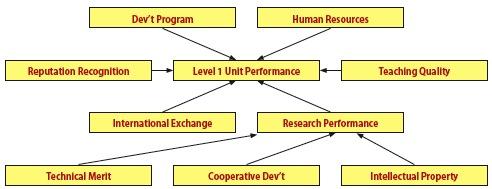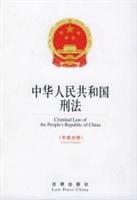Increased competition given rise to new process models and techniques to compete - with a stress on workforce empowerment and productivity. One such techniques that has been around for the past few years is P-CMM.
P-CMM or People CMM is a workforce focused compatibility maturity model developed by the SEI. The institute, funded by the US Department of Defense has to its credit another compatibility maturity model that is targeted at software engineering . People CMM was introduced in 1995 to bring in a focus to workforce process efficiencies and productivity. The main aim of P-CMM is to enhance organization capabilities and effectiveness in human resource activities of software organizations to attract, develop, motivate, organize, and retain the talent needed to continuously improve software development capability. Many organizations know that they should address people/cultural issues as part of their improvement activities but they do not know how to go about it.
It was also widely believed (by SEI and other organizations) that the earlier CMM did not pay enough attention to people and their role in increasing organization effectiveness. The software CMM laid down processes in software engineering activities and sidelined an workforce activities. According one of their own presentations SEI realized that variation in inpidual performance can result in as much as a 28 to 1 variation in the overall performance of the organization. To tackle this opportunity and standardize and institutionalize workforce focused processes in organizations, P-CMM came in existence.
Components of P-CMM
Like its software counterpart, P-CMM involves a similar staged implementation process which is pided in 5 levels of maturity. The maturity levels indicate the workforce capability to practice the activities mentioned in those respective maturity levels. The maturity framework is based on 3 working principles - focus on a target domain (in this case people processes), total quality principles and concepts that have been laid out by revolutionary experts like Deming, Crosby etc and finally a staged, incremental development process in the form of different maturity levels. In fact the last is a distinct differentiation point that P-CMM (and other CMMs) has against any other process frameworks.The people management functions that P-CMM activities specifically address are;
Recruiting,
Selection, Performance management, Training, Compensation, Career development, Organizational design, and Team and culture development.The activities touch all the above areas in an integrated way and try to ensure that no area is left unexplored - as it is quite evident that stress on some activities (say team development) and neglect on others (say compensation and performance management) is not going to bring in results are the activities are inherently dependent on each other for their effective implementation.
The maturity levels begin with the initial level of maturity where little or no people management activities are assumed to exist and there are typical human resource problems like high turnover rate and proceeds to instill human resource processes in each increased sophisticated level to reach the stage of optimizing and continuously improving methods for personal and organizational competence.
The following image depicts the 5 maturity levels of the P-CMM framework:
Implementation experiences
P-CMM boasts of an unique bottom-up approach in its framework. The activities that make up the P-CMM framework start with focusing on inpidual/ unit level and proceed to include group/ organization alignment only after the processes for inpidual/ unit level development have been carried out. This is one of the main reasons the model has been usually found to be received favorably by the technical professionals than other process frameworks that adopt the top-down approach.One of the first benefits of P-CMM is seen to be reduction in voluntary turnover as P-CMM gives focus on employees career development opportunities by activities like performance management and training & development.
This being so, P-CMM has been often accused of its own procedural form – that it is all paperwork and leaves no room for innovation indicated by the activity-level list of P-CMM that shows innovation as a formal activity only at the fifth and final level.
P-CMM (version 2)
After a little more than 5 years of releasing P-CMM, the SEI launched in 2001 in Bangalore, India P-CMM version 2 - the version2 of the model. The primary motivation for SEI for updating the P-CMM was that team building activities that were placed at Level 4 in the first version was looking out of place and to many people, much later in the model than expected. Most organizations initiate the formal development of work groups and teams while working toward People CMM Level 3 while it was actually advised in level 4. Furthermore version 2 of P-CMM also included basic learnings from the discipline of Knowledge Management in advanced levels of the model.Maturity Level 4 has been significantly expanded in People CMM Version 2. This means that though an organization that has already achieved a Maturity Level 4 capability in one of the project-based CMMs, does not need to reassess itself with the help of Version 2, SEI claims that the organization will achieve much stronger performance results when guided by Version 2, since it brings capabilities associated with workforce empowerment and six sigma-style management capabilities.
Knowledge Management
Another discipline that attracted attention of organizations by its workforce focus is Knowledge Management. KM has been in existence since a long time before the CMM model (though its process has been increasingly formalized in the recent years). The reason to introduce Knowledge Management in this article is that both P-CMM and Knowledge Management have at their heart the overall development of the organization through inpidual and group workforce development.At the same time, there is a distinct differences in each approach to solve organizational problems. P-CMM is more procedural in nature and places a standard model to work in different situations while Knowledge Management is more philosophical and strategic in nature and work. The aim of Knowledge Management is to increase organizational knowledge capital - by improving and nurturing the knowledge assets of the company. Knowledge Management practices involve building on the relevant knowledge base of employees - whether it is knowledge pertaining to the organization (processes, policies, products), people (competencies, profiles, roles), customer(business, behavior patterns) and general business environment (markets, industries, trends). P-CMM tries to include some basic principles of Knowledge Management in its model by way of knowledge analysis and competency mapping processes.
P-CMM was initiated with the software industry in mind however experts in the field claim that the framework can be applied to any other industry with equal success. Knowledge Management was developed keeping in mind knowledge industries (though certain 'modules' and parts of KM can be implemented in other industries as well).

Organizations that have implemented P-CMM (or KM) have found out success by streamlining their operations and bringing 'an order to chaos'. The newer version of P-CMM is reported to be more beneficial to organization with its increased focus on workforce development activities and professionals are apparently happy with the development - so much so that there's a humble question on the SEI's FAQ section about the institute's plans on releasing the 3rd version!
Just for the record, the institute doesn't have any such plans, at least till it garners enough feedback on the current version as it did for the first.
 爱华网
爱华网

